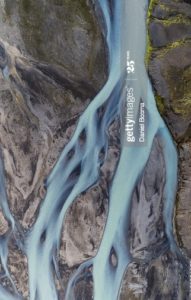When I was about 12 years old, my conservationist dad talked to me about watersheds. He explained that a watershed was a geographic area that included all the creeks, streams and tributaries that flowed into a river basin. It isn’t enough, he said, to simply pay attention to the health of a river; we have to think about all the water that flows into that river. Only then can we preserve the health not only of the river, the fish and other aquatic life in it, but we must also consider the trees and grasses, insects, birds and mammals and, ultimately, people who live in the watershed zone. To put it simply, if someone dumps toxic waste from a factory into a stream miles upriver from the riverbed, it will eventually poison the river and all life forms dependent on it. He drew a map that looked somewhat like this. 
My dad taught me that lesson in the 1950s, long before the Clean Water Act, when the rivers that I know in Massachusetts, like the Nashua and the Charles, were running neon green and purple and filled with poisons.
Since then, I have observed lots of “watersheds” everywhere in the natural world, wherever there is life: in microscopic forms and in familiar sights I see daily. Like the tree I passed just a week ago in the woods.

Its large tributaries are the roots that snake out from the base of the trunk, wrapping the rock, reaching into the earth to and out through the thinner branching roots that search for clean groundwater and soil nutrients, sucking them up to feed the tree.
Today, I can look at the back of my old hand and see the same thing: veins carrying oxygen-poor blood back to my heart which will then be carried to my lungs, there to be fed with life-giving oxygen and pumped back into my hand and my whole body through my arteries, that, like tree roots, are “underground.”
There’s a similar system in the lungs as well, the bronchial tubes acting like roots branching out from the “trunk” of the trachea into each lung picking up the air we breathe deep into the lungs, nourishing our bodies.
Referring to our vast interdependent ecosystem wherein all separate life forms survive and thrive only in relationship to the health of the surrounding environment, John Muir said, “When we try to pick out anything by itself, we find it hitched to everything else in the universe.” I like to think, as well, that his observation applies to the “watershed” examples I have described and of which there are many more: from high up in the leaves and branches of a towering maple reaching to the sun for life-giving light; to far below the ocean where staghorn coral sends out its antlers to catch food as it floats by.
Patterns: coincidence or intention? I observe life forms not as a botanist or physiologist because I am neither; but as one who seeks poetry and metaphor when I explore my world. Also because I believe in an Original Source, be it a microscopic life form, a fabulous explosion or a Being called by many names. Which leads me to believe that the created world has meaning, purpose and connection. That is the lesson I will take away from these observations: that while I live in a world which seems everywhere to be splitting apart, there is ample evidence of an Order which persists beneath the chaos; stronger and more enduring than humanity’s best efforts to mess it up. Or, to put it another way, we are in a watershed moment. It’s an opportunity to pour streams of kindness, inclusiveness and equity into an ocean of justice and love.
